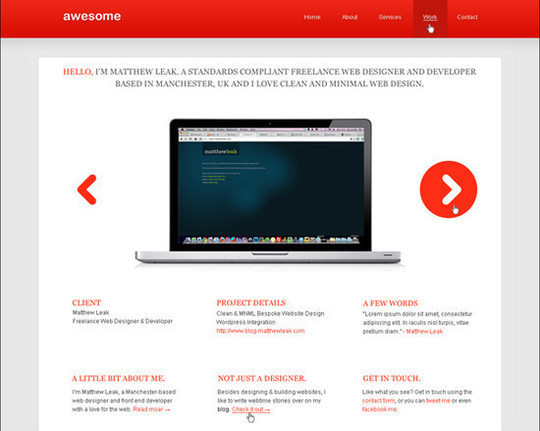It’s the purpose of every blog owner to attract visitors. Otherwise, what would be the sense in writing? As a result, search engine optimization needs to be part of maintaining the site. Luckily, bloggers don’t have to invest in costly services to give the website a boost in being seen on the results page.
A lot of people assume they need to invest thousands of dollars per year in SEO to drive traffic. In reality, some of the smallest changes can have a profound impact in how well a site performs in search engines.
From reseller hosting to a blog addition on eCommerce, it doesn’t take a huge SEO budget to get the attention of the average Internet user. In fact, some things can be done without spending a dime.
Developing the Content
The first priority for any blogger is developing content. Obviously this is how visitors are going to find the site in the first place. However, there is quite a bit that can go into writing for optimization.
Separating the Content
Steer clear of developing what’s called a, “wall of text.” This is when text is blocked into one giant blurb on a blog’s page. It’s more difficult to read and visitors will often leave the site without exploring the content. Keep paragraphs below 150 words and make sure to add headers for each major point.
Keywords and Phrases
Keywords and keyphrases will always be important. However, the practices of old will actually hurt the website’s rank in search results. For instance, blog posts that have keyword saturation will score lower in sites like Google. Keep the use of words natural and logical.
Know the Perfect Length of a Piece
There is debate online about the perfect size for a blog post to score well in search engines. Some experts believe 2,500 words is a good length while others experience far more success with pieces ranging around 1,500. It all boils down to quality and preference.
Unfortunately, this means that bloggers will have to find that sweet spot for themselves for what works on the blog.
Use a Solid Hosting Platform
Not all web hosts are the same. In optimization terms, this means a fast host is more ideal. Because speed plays such an important part of SEO, bloggers need to have a strong foundation to build the site.
What about reseller hosting platforms? These can work well as long as the account has enough bandwidth allocated. As most blogs don’t experience a great deal of traffic or require a substantial amount of web space, offering reseller accounts have potential to help drive online success.
Hosts that offer a content delivery network can also boost the success of SEO for a blog. A CDN distributes the website allowing it to be faster for visitors and search engines alike in various parts of the world. In some instances, this performance can reach up to 10 times what it was before.
Keep Images Optimized
Image optimization can be done simply by making sure graphics are the right size. All too often, bloggers will directly upload pictures from their smartphones to accentuate the post. Unfortunately, this also means the image is beyond the viewable limit of most displays.
Even shrinking down the image in coding doesn’t stop browsers from rendering the graphic as a whole. If a 600 by 375 pixel image is needed, then that is what should be uploaded. Using free tools like Pixlr can help optimizing by giving users an easy way to shrink the image.
Keeping images to a minimum can also improve SEO. This is because it takes time to download all graphics and code from a website. The fewer large files that need to be transferred, the faster the site becomes. Speed is one of the reasons why some bloggers prefer a minimalist approach to design.
Keep Ad Serving and Affiliates to a Minimum
One thing a lot of people don’t take into consideration is the speed reduction that happens with affiliates and ad-serve networks. Any time the blog has to pull data from a third-party, it affects the overall performance of the site. If an exceptionally slow network is used, this can directly cause poor SEO.
Many people who decide to build a blog want to do so to make money. Serving networks such as InfoLinks can offer a way to generate some of that revenue. However, it also comes with the price of slowing the site. These types of networks are OK to use as long as the blogger takes a Buddhist approach – meaning everything in moderation.
Sometimes all it takes is a properly placed affiliate banner and strong content to make money from the site. Filling the blog’s pages with five or more affiliate links and third-party ads will cause problems from the perspective of SEO. In this sense, less is definitely more.
Optimize Internal Linking
While backlinks can be helpful, bloggers shouldn’t underestimate the value of internal linking. Whether they are aimed at a credible source or aimed at internal pages, linking can be very helpful in boosting SEO.
When linking out from the blog, do so to sites that have a high authority in the topic. It’s also important that the topic is relevant to the blog post. For instance, a link from a blog about childcare would be unhelpful if it’s aimed at a website for the local liquor store.
Linking within the site is helpful to guide the audience to find other relevant content. It also helps search engines find the webpages that are more important to the site’s owner. This is referred to as, “sharing link juice.”
SEO Is Easier than Many May Think
Whether the blog is to support a reseller hosting account or used to share personal opinions, it’s all about driving traffic. Develop strategies that work to improve the exposure of the site and stay away from those that hinder performance. Engines like Google are looking to provide a quality experience to those looking for content. That quality comes from how the website is set up and the practices of the blogger.





